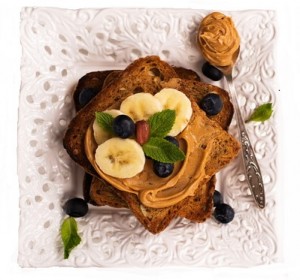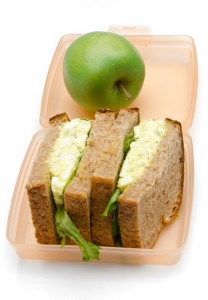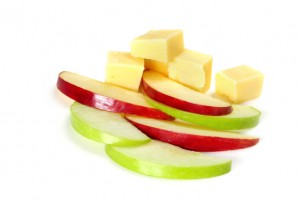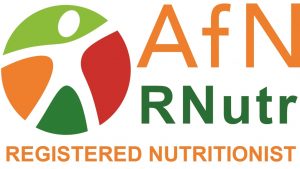Not having a healthy breakfast is a sure-fire way to start your journey feeling weary. According to research, one in three of us still regularly miss breakfast, and this is usually due to time pressures in the morning or not feeling hungry when setting off so early in the day. Still, we all need to break our overnight fast so we can refuel for the activities ahead.
Substantial research evidence shows having breakfast is related to performance, particularly being able to concentrate on the day’s tasks before us and our mood, along with weight control, improving glycemic control, managing jet-lag, reducing the risk of cardiovascular disease, blood pressure and diabetes. All these issues we now know affect business travellers more than office-based workers.
So, what constitutes a healthy breakfast?
To get the full benefits of breakfast, it shouldn’t be just any old breakfast, but one which consists of many, if not all, the main food groups. Ideally, breakfast should supply between 20 – 25% of your nutritional requirements,  and include carbohydrate foods (starchy whole grains), dairy, fruit or vegetables and protein sources. Business travellers also need to ensure they have adequate fluids at breakfast time.
and include carbohydrate foods (starchy whole grains), dairy, fruit or vegetables and protein sources. Business travellers also need to ensure they have adequate fluids at breakfast time.
Choose a winning combination option
Excellent breakfasts are those which combine complex/starchy carbohydrate, such as porridge, cereals, or wholemeal toast, with protein, such as dairy, fish, peanut butter or eggs, which improves satiety. This means it takes longer to digest, leaving you feeling satisfied without making you feel discomfort from being overfilled.
It’s easier to do this when at home but harder when in transit. So, here are a couple of tried and tested examples of what you can pick up quickly at the airport.
- Egg and mayo sandwich, preferably wholegrain or rye bread.
- Yoghurt and banana smoothie
- Smoked salmon on whole-wheat bagel
- Boiled eggs, spinach and oatmeal or rye crackers (often available from retail stores at airports such as Boots the Chemist, WHSmith or Marks & Spencer)
Or combine dishes from the menu. Most restaurants offer at least two sides which you can combine.
- Baked beans and wholegrain toast
- Poached egg on granary or rye toast
 Fresh fruit with muesli and yoghurt
Fresh fruit with muesli and yoghurt- Smoked salmon and wholemeal toast
- Peanut butter on wholegrain toast with a chopped banana.
Cooked breakfasts
A cooked breakfast can still be part of your travelling. However, a traditional fry up at an airport is often near 1000 calories (approximately half your daily calorie requirement). In some airport restaurants we reviewed, cooked breakfast was over 1200 calories. In sharp contrast, breakfasts which include healthy leaner proteins cooked with minimal added fat are only a quarter to a half of this calorific value. A plain egg omelette and toast, for example, is approximately 350 kcals, a grilled kipper with grilled tomato and mushrooms is 350 kcal, while baked beans on wholemeal toast is only 250 kcals.
Breakfast on the go
If you’re catching an early flight, then enabling yourself to have something en route might be the only realistic option for beginning your journey with a timely breakfast. Many airport cafes and restaurants are not fully open until the first flight has departed. Some airport lounges also choose not to open until after the first flight has taken off.
 So it’s a good idea to prepare your cupboard and fridge with easy to snatch items the day before. It could include a carton of juice or a bottle of water; individual pieces of cheese, a boiled egg or a punnet of yoghurt; muesli, rye or oat biscuits; banana, a piece of citrus fruit or a trail mix of dried fruits and nuts.
So it’s a good idea to prepare your cupboard and fridge with easy to snatch items the day before. It could include a carton of juice or a bottle of water; individual pieces of cheese, a boiled egg or a punnet of yoghurt; muesli, rye or oat biscuits; banana, a piece of citrus fruit or a trail mix of dried fruits and nuts.
You might consider it worthwhile making a quick grab item the night before. For example, a whole grain roll with low-fat cream cheese and smoked salmon; an egg sandwich; or a whole grain bagel with scrambled egg and ham; or a homemade Bircher can all be made the evening prior, ready to go in the morning.
Beware of hidden sugars in fashionable ‘healthy’ breakfasts
Brilliant healthy breakfasts are those that taste great. But beware of those full of hidden sugars which caterers add. This is particularly true when a breakfast has become a popular ‘health’ option.
Greek Yoghurt, granola and compote is a perfect example. Most airport cafes, retail outlets and restaurants now offer this as either a grab and go item or an alternative to a traditional breakfast on their menu. When made at home, you can control the amount of sugar which you add. However, when purchased at airports, the compote, yoghurt and granola can all have added sugar. So much so that most items we reviewed in airport retail, cafes and restaurants contain the equivalent of 5 to 6 teaspoons of sugar. While some of this is naturally present, such as lactose in milk or fructose in the fruit, most of it has been added.
 To choose to a lower sugar option, select one with only granola or compote but not both. Better still, purchase a fresh fruit salad and add yoghurt or purchase porridge and add fresh fruit. Porridge and whole fruit can be purchased at some airport cafés, such as Costa Coffee and Starbucks. Just make sure you double check the ingredients for added sugar on the packet before purchase!
To choose to a lower sugar option, select one with only granola or compote but not both. Better still, purchase a fresh fruit salad and add yoghurt or purchase porridge and add fresh fruit. Porridge and whole fruit can be purchased at some airport cafés, such as Costa Coffee and Starbucks. Just make sure you double check the ingredients for added sugar on the packet before purchase!
Delayed reaction
Lastly, if eating first thing isn’t your thing, then try to eat within two hours of getting up. A late breakfast is still a breakfast! You could start with something simple, like a piece of cheese and an apple, and gradually build it up over time. Once you start to have something on a regular basis, you will become accustomed to food eaten at a certain time, and your body will begin to secrete digestive juices in anticipation. Over time, you can bring this forward a little so that your body is ready earlier in the day.





























